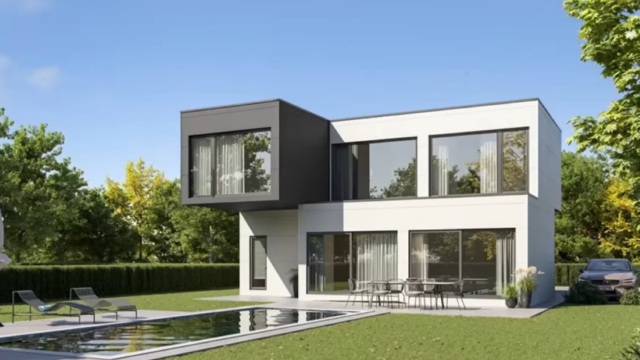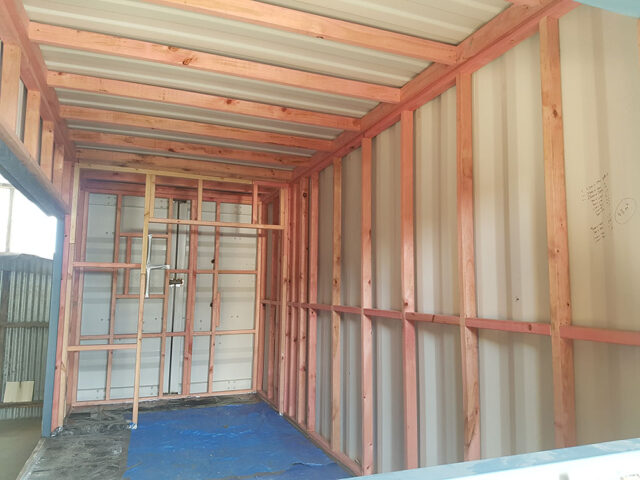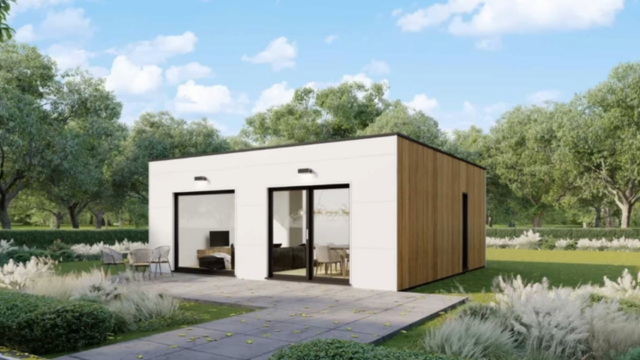
Living in a steel structure brings unique challenges. Without proper planning, temperature regulation can become a nightmare. Steel conducts heat and cold efficiently, so addressing insulation issues is essential to making your container house comfortable year-round. Let’s explore practical, hands-on solutions to manage this.
Key Points
- Steel transfers heat and cold quickly, so insulation is critical.
- Different insulation types suit various climates and budgets.
- Ventilation and reflective barriers improve temperature control.
- Simple, cost-effective fixes can work well.
- A well-insulated home adds long-term value and comfort.
Choosing the Right Insulation for Steel Homes
Every material has pros and cons. For container houses, factors like climate, budget, and personal preferences play a role. Spray foam remains a popular option due to its versatility and ability to seal gaps. However, rigid foam panels and batt insulation are excellent alternatives, especially for those managing costs or looking for DIY solutions.
If you’re just getting started with container living, finding tiny houses for sale near me can make life easier. For example, platforms like Nomad Adjacent help you explore listings near you via their map search while connecting with others in the tiny home community.
Spray foam works particularly well for sealing corners and irregular spaces in steel walls, preventing air leaks and moisture buildup. Batt insulation, on the other hand, is easy to handle and install, making it perfect for a DIY project. Both options are great for improving comfort and reducing energy bills.
Addressing Common Climate Concerns in Steel Houses
Dealing with Heat
Steel structures heat up quickly, making summers unbearable without proper measures. Reflective barriers can reduce heat transfer significantly. Installing these barriers directly on walls and roofs reflects sunlight, preventing overheating.
Combining barriers with spray foam doubles the effect, as the foam adds an insulating layer while the reflective material bounces heat away.
Simple actions like shading your house with trees or using window films can also help. Ventilation plays a big role, so adding vents or exhaust fans to release trapped heat is a cost-effective solution.
Fighting the Cold
Winters can be just as challenging. Steel walls transfer cold into the structure, creating an icy environment. Focus on sealing all gaps with foam or caulking to stop drafts. Use thicker insulation materials like fiberglass or rigid foam for walls and ceilings.
For floors, consider adding insulated panels beneath your surface materials, which can prevent cold air from seeping through.
Combining insulation with heating strategies, such as portable heaters or radiant flooring, creates a cozier living space even during freezing temperatures.
Step-by-Step Guide to Insulating a Container Home

- Inspect the Structure: Check for leaks, rust, and gaps. Fix any issues before adding insulation to ensure durability.
- Choose the Right Materials Select insulation based on climate and budget. Spray foam works for tight spaces, while rigid foam offers an affordable, durable option.
- Install Vapor Barriers: Prevent moisture buildup by placing barriers behind walls and floors to protect insulation materials.
- Add Reflective Materials: Reflective barriers or coatings dramatically reduce heat transfer and improve energy efficiency.
Focus on Ventilation Install vents or fans to maintain airflow and reduce condensation issues.
The Role of Ventilation in Temperature Control
Ventilation is often overlooked when designing steel homes. Without proper airflow, moisture builds up, leading to mold and rust. Cross-ventilation, where air enters through one opening and exits another, keeps air fresh and prevents heat buildup. Exhaust fans are particularly effective for releasing trapped air and maintaining a stable indoor environment.
Natural ventilation through strategically placed windows can also help, especially in areas with moderate climates. Combining insulation with effective ventilation not only enhances comfort but also prolongs the life of your home.
How Insulation Impacts Energy Efficiency
A properly insulated house saves money on heating and cooling. Thin steel walls offer no barrier to external temperatures, leading to high energy bills. Insulating walls, floors, and roofs minimizes energy loss and reduces reliance on HVAC systems. Over time, this means lower costs and a smaller environmental footprint.
Energy efficiency also adds long-term value.
Tips for DIY Enthusiasts

Planning Ahead Saves Time
Sketch your space and decide on insulation types for each area before starting. This ensures materials are used efficiently, avoiding unnecessary costs. For example, spray foam may be ideal for tight corners, but rigid foam might work better for flat surfaces.
Use Multipurpose Materials
Opt for insulation options with built-in vapor barriers to cut down on extra expenses. Combining insulation layers also enhances temperature control without additional effort.
Don’t Overlook Small Details
Pay attention to edges, corners, and joints. Even small gaps can undermine your efforts. Filling these gaps with foam or caulking ensures a snug, energy-efficient seal.
Explore Recycled Alternatives
Eco-friendly insulation options, such as denim or wool, provide excellent thermal properties while reducing your environmental impact. These materials are also safer to handle compared to fiberglass.
Practical Alternatives for Tight Budgets
Not every project requires expensive materials. Blanket insulation or polystyrene sheets are cost-effective choices. Adding rugs or carpets to cold floors provides an extra layer of warmth during winter.
Repurposed materials can also be used creatively. For instance, recycled pallets can create shaded outdoor areas, reducing indoor heat gain. Curtains or thermal blinds are another inexpensive way to insulate windows and reduce energy loss.
Combining Insulation with Aesthetics
Insulation doesn’t have to compromise interior design. Covering walls with wood panels or drywall not only conceals insulation but also adds a polished, finished look. Decorative window films or tinted glass enhance style while blocking excessive heat and UV rays.
Creating an aesthetic balance is key. Use materials that align with your overall design theme while ensuring insulation remains effective. For instance, bamboo or reclaimed wood adds a rustic feel while complementing sustainable living values.
Avoiding Common Mistakes in Insulating Steel Homes
Ignoring Moisture Problems
Steel structures are prone to condensation. Failing to address this issue can lead to mold, rust, and structural damage. Always use vapor barriers to prevent moisture from penetrating walls and floors.
Choosing the Wrong Materials
Not all insulation materials suit every climate. For example, fiberglass may not perform well in humid areas, as it absorbs moisture. Research your options thoroughly to find materials best suited for your environment.
Neglecting Regular Maintenance
Over time, insulation can degrade or sustain damage. Inspect your insulation regularly for signs of wear and tear. Addressing issues early prevents larger, costlier problems down the line.
The Importance of Climate-Specific Insulation
Different climates demand tailored insulation strategies. In hot regions, reflective barriers paired with foam insulation keep indoor temperatures cooler. For colder climates, thicker materials like fiberglass or rigid foam provide better thermal resistance.
Adapting insulation based on local weather conditions ensures maximum comfort and energy efficiency. Consulting with professionals familiar with your area’s climate can help you make informed decisions.
Final Thoughts
Living in a container house requires thoughtful planning to address unique challenges like temperature regulation. With the right insulation and ventilation, you can create a comfortable, efficient space to enjoy all year long.






